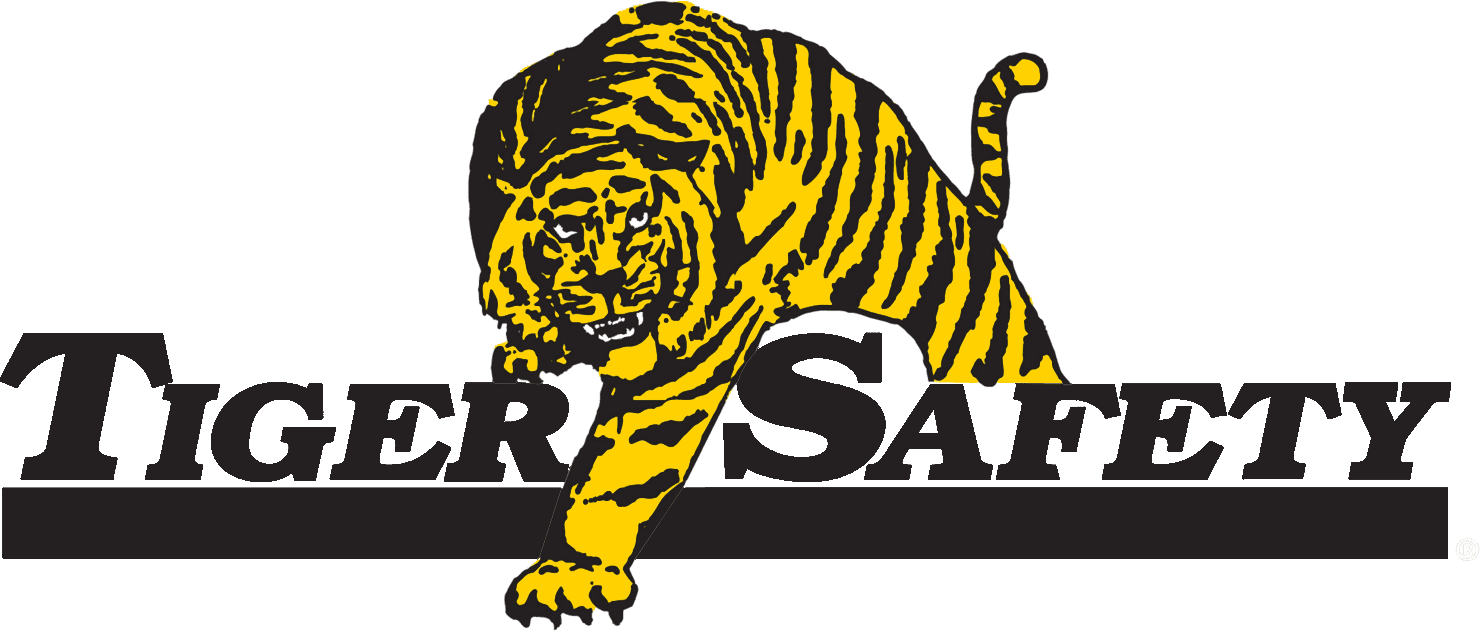The oil and gas industry is characterized by diverse and complex operations that often involve hazardous materials and processes. Consequently, implementing robust emergency response plans is crucial for managing potential incidents and ensuring the safety of employees, the environment, and facility assets. At Tiger Safety Rentals, we specialize in providing safety services and equipment designed to support the development and execution of comprehensive emergency response plans for the oil and gas industry.
In this article, we will discuss the key components of effective emergency response planning in the oil and gas industry and provide guidance on best practices for developing and enhancing your own plans. We will also explore the role of specialized safety equipment and services in supporting your emergency response efforts.
1: Identifying Potential Emergencies and Hazards
The first step in developing an effective emergency response plan is to identify the potential emergencies and hazards associated with your oil and gas operations. An accurate understanding of potential hazards allows you to prioritize resources and create targeted response strategies.
Some common emergencies and hazards in the oil and gas industry include:
– Fires and explosions, which can result from the presence of flammable materials and ignition sources.
– Gas leaks or releases, potentially leading to toxic or asphyxiant exposures, as well as flammable and explosive atmospheres.
– Equipment failures or breakdowns, which can cause loss of containment, process upsets, or other hazardous situations.
2: Establishing Clear Roles and Responsibilities
An effective emergency response plan requires a clear delineation of roles and responsibilities for all personnel involved in the response effort. This ensures that each individual knows their specific tasks and duties during an emergency and helps prevent confusion or delays in responding to an incident.
Key emergency response roles and responsibilities to define include:
– Incident commander, responsible for overall management and coordination of the emergency response effort.
– Operations leader, who directs tactical response actions, such as firefighting, rescue, or spill containment activities.
– Safety officer, who monitors the response effort to ensure the safety of all personnel and compliance with applicable regulations and standards.
3: Developing Emergency Response Procedures and Protocols
With potential emergencies and hazards identified and roles and responsibilities defined, the next step is to establish specific procedures and protocols for responding to various incidents. These procedures should be clear, concise, and easily understood by all emergency response personnel.
Key aspects of developing emergency response procedures and protocols include:
– Outlining the primary objectives and priorities for each type of emergency, such as protecting life, minimizing environmental impacts, and ensuring facility safety.
– Detailing the specific actions and steps to be taken during each phase of an emergency response, from initial notification and activation to response deployment and incident termination.
– Identifying necessary equipment, resources, and personnel for each emergency response scenario, ensuring that these assets are readily available and properly maintained.
4: Training and Exercise Programs for Emergency Response Personnel
Regular training and practical exercises are crucial for ensuring that your emergency response personnel are prepared to respond to emergencies effectively and efficiently. Training programs should be tailored to the specific needs and hazards of your oil and gas operations, providing personnel with the knowledge and skills needed to execute their response duties effectively.
Key components of an effective training and exercise program include:
– General emergency response training, covering topics such as hazard recognition, emergency communication, and incident command systems.
– Role-specific training, targeting the specific duties and responsibilities of each emergency response position and providing hands-on instruction in the use of equipment and resources.
– Regular drills and exercises simulating various emergency scenarios, allowing personnel to practice their response skills and identify areas for improvement.
5: Communication and Coordination during Emergencies
Effective communication and coordination are critical for ensuring a successful emergency response effort. Your emergency response plan should detail the communication methods and channels to be used during emergencies, as well as the information that must be shared amongst response personnel, company leadership, regulatory agencies, and other stakeholders.
Important considerations for communication and coordination during emergencies include:
– Establishing clear and standardized communication procedures, such as pre-defined radio frequencies, code words, or status reports, to enhance clarity and information sharing during emergencies.
– Identifying and training personnel responsible for liaising with external organizations, such as local emergency services, government agencies, or industry networks, ensuring a coordinated response effort.
– Implementing regular communication briefings and updates during emergency response efforts, promoting situational awareness and a shared understanding of response objectives and progress.
6: Continual Improvement and Review of Emergency Response Plans
An effective emergency response plan is not a static document; it should be subject to regular review and improvement to address changes in facility operations, personnel, technology, and regulatory requirements. By fostering a culture of continuous improvement, your organization can maintain a robust and up-to-date emergency response capability.
Key principles for continual improvement and review of emergency response plans include:
– Establishing formal processes for reviewing and updating your emergency response plan at regular intervals, as well as in response to significant changes, incidents or near misses, and new regulations or standards.
– Engaging with personnel at all levels of the organization to solicit input and feedback on the emergency response plan, leveraging their experience and expertise to optimize safety performance.
– Monitoring and evaluating the performance of your emergency response program through drills, exercises, and real-world incidents, identifying trends and areas for improvement.
Developing a comprehensive and effective emergency response plan in the oil and gas industry is critical for managing potential incidents and ensuring the safety of employees, the environment, and facility assets. By identifying potential hazards, establishing clear roles and responsibilities, developing response procedures, and fostering a culture of continuous improvement, your organization can minimize risks and maintain a high level of safety performance.
7: Integrating Technology Solutions in Emergency Response Planning
The use of technology can significantly enhance the effectiveness and efficiency of your emergency response efforts. By integrating innovative solutions such as advanced gas detection systems, remote monitoring, and mobile applications, organizations can improve communication, coordination, and situational awareness during emergencies.
Key technology solutions to consider for emergency response planning include:
– Wireless gas detection systems, which enable real-time monitoring of hazardous gas levels and rapid alerting of personnel during an incident.
– Geolocation and tracking systems for emergency response personnel and resources, providing real-time visibility and enhanced coordination during response efforts.
– Mobile applications and software tools for emergency response management, communication, and information sharing, promoting efficiency and decision-making during critical situations.
8: Preparing for Emergency Response in Offshore and Remote Locations
Oil and gas operations in remote and offshore locations present unique challenges for emergency response planning. Limited access to resources, logistical challenges, and communication constraints require additional considerations when developing and implementing emergency response strategies for these settings.
Some best practices for emergency response planning in remote and offshore locations include:
– Strengthening self-sufficiency and resilience, by ensuring a sufficient stock of emergency response equipment, resources, and trained personnel are available on-site.
– Establishing contingency plans and mutual aid agreements with nearby facilities, local emergency services, or industry networks, to support and enhance emergency response capabilities.
– Utilizing satellite or wireless communication systems, and remote monitoring technologies, for real-time coordination and situational awareness during emergencies.
9: Addressing Environmental and Community Impacts in Emergency Response Planning
The oil and gas industry has a responsibility to minimize the impacts of incidents on the environment and surrounding communities. Integrating environmental and community considerations into your emergency response plan can help reduce the potential consequences of incidents and promote responsible operations.
Key elements of addressing environmental and community impacts in your emergency response planning include:
– Incorporating environmental protection measures and objectives into your response strategies, such as containment, recovery, and disposal protocols for spills or releases.
– Engaging with local communities, public authorities, and other stakeholders to cooperate on emergency planning, response, and communication efforts.
– Developing communication and public information plans to keep communities informed during incidents, enhancing your organization’s reputation for transparency and social responsibility.
10: Ensuring Regulatory Compliance and Industry Best Practices
Complying with relevant regulatory requirements and following industry best practices is essential for maintaining a robust and effective emergency response program. By keeping up-to-date with changing regulations, operating standards, and emerging practices, your organization can stay at the forefront of emergency response capabilities in the oil and gas industry.
Key steps for ensuring regulatory compliance and adopting industry best practices include:
– Conducting regular reviews of your emergency response plan to assess compliance with relevant regulations, standards, and guidelines.
– Participating in industry associations, forums, or conferences to learn from peers and adopt the latest emergency response advancements.
– Collaborating with regulatory agencies, emergency responders, and subject matter experts to validate and enhance your emergency response practices.
An effective emergency response plan is crucial for managing emergencies and hazards in the oil and gas industry, minimizing risks and enhancing the safety of employees, the environment, and facility assets. By adopting a comprehensive and proactive approach, integrating technology solutions, accounting for unique operational challenges, and staying informed of regulatory requirements and best practices, your organization can optimize its emergency response capabilities and maintain a high level of safety performance.
11. Emergency Response Planning and Business Continuity
In addition to the immediate safety concerns, effective emergency response planning also plays a vital role in preserving business continuity in the oil and gas industry. A well-executed response can mitigate the potential disruption to operations and supply chains, minimize asset damage, and maintain your organization’s reputation in the industry.
Key aspects of integrating emergency response planning and business continuity include:
– Developing strategies for the rapid resumption of critical operations and processes following an emergency, such as backup power systems, equipment redundancy, and alternative supply routes.
– Identifying and prioritizing vital assets and operations that require protection and restoration during an emergency, focusing on minimizing downtime and financial impacts.
– Training personnel in emergency response and business continuity roles to ensure seamless coordination and recovery of operations during and after incidents.
12: Leveraging External Expertise and Partnerships
External expertise and partnerships can play a crucial role in enhancing your organization’s emergency response capabilities. Collaborating with specialized safety service providers, emergency responders, consultants, or industry associations offers access to valuable knowledge, resources, and technologies that can benefit your emergency response program.
Important elements of leveraging external expertise and partnerships for emergency response planning include:
– Consulting with specialized safety service providers, such as Tiger Safety Rentals, to support the development and optimization of your emergency response plan and associated equipment and training needs.
– Engaging with local emergency response organizations, such as police, fire, and medical services, to coordinate resources and establish mutual aid agreements.
– Participating in industry forums or associations to share experiences, lessons learned, and best practices related to emergency response in the oil and gas sector.
Conclusion
The importance of a comprehensive and effective emergency response plan in the oil and gas industry cannot be overstated. Incorporating a multi-faceted approach that addresses hazard identification, roles and responsibilities, procedures, training, technology, and regulatory compliance, while also considering unique operational challenges and business continuity, can ensure the safety and protection of your employees, facilities, and surrounding communities.
At Tiger Safety Rentals, our dedication to providing specialized safety services and equipment tailored specifically to the onshore and offshore oil and gas industry makes us the ideal partner to support your emergency response planning needs. Contact us today to discover how our extensive experience and innovative safety equipment rental solutions can help your organization develop a robust and resilient emergency response program for your onshore and offshore operations.

